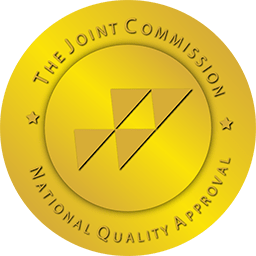What is Fentanyl and How Does it Work?
Fentanyl is a prescription opioid medication primarily used to treat severe and chronic pain. It is estimated to be 50 to 100 times more potent than morphine and 30 to 50 times more potent than heroin. Fentanyl works by binding to the brain’s opioid receptors, effectively reducing the perception of pain and inducing a sense of euphoria. However, this powerful effect also makes it highly addictive, leading to the development of physical dependence and withdrawal symptoms upon cessation of use.
Common Signs and Symptoms of Fentanyl Withdrawal
The onset and severity of fentanyl withdrawal symptoms can vary depending on factors such as the duration and intensity of use, the individual’s physiology, and the presence of any underlying medical conditions. Some of the most common signs and symptoms of fentanyl withdrawal include:
- Physical Effects:
- Muscle aches and pains
- Abdominal cramps
- Nausea and vomiting
- Diarrhea
- Sweating
- Tremors
- Fever
- Insomnia
- Psychological Effects:
- Anxiety
- Depression
- Irritability
- Restlessness
- Cravings for the drug
Physical Effects of Fentanyl Withdrawal
The physical effects of fentanyl withdrawal can be particularly intense and challenging to endure. As the body adjusts to the absence of the drug, it goes through a series of physiological changes that can cause significant discomfort. Muscle aches, abdominal cramps, and gastrointestinal distress are common, as the body struggles to regain homeostasis. Sweating, tremors, and fever are also typical, as the body attempts to regulate its temperature and nervous system.
Psychological Effects of Fentanyl Withdrawal
In addition to the physical symptoms, fentanyl withdrawal can also have a significant impact on an individual’s mental and emotional well-being. Anxiety, depression, and irritability are common, as the brain struggles to adapt to the absence of the drug’s effects. Cravings for the drug can be intense, making it challenging for individuals to resist the temptation to relapse. Restlessness and insomnia can further exacerbate the psychological distress, creating a vicious cycle that can be difficult to break.
Timeline and Duration of Fentanyl Withdrawal
The timeline and duration of fentanyl withdrawal can vary depending on several factors, including the individual’s level of dependence, the duration of use, and the method of withdrawal (e.g., cold turkey vs. tapering). Generally, the initial withdrawal symptoms can begin as early as 6-12 hours after the last dose and may peak within 72 hours. The acute phase of withdrawal can last for 7-10 days, with some lingering symptoms, such as cravings and mood disturbances, potentially persisting for several weeks or even months.
Treatment Options for Fentanyl Withdrawal
Seeking professional medical assistance is crucial when navigating the challenges of fentanyl withdrawal. Several treatment options are available, including:
- Medication-Assisted Treatment (MAT):
- Medications like buprenorphine or methadone can help ease withdrawal symptoms and reduce cravings.
- These medications are administered under the supervision of a healthcare provider and can be an effective part of a comprehensive treatment plan.
- Detoxification Programs:
- Inpatient or outpatient detox programs provide around-the-clock medical monitoring and support to manage the acute phase of withdrawal.
- These programs often incorporate a combination of medications, therapy, and holistic interventions to address both the physical and psychological aspects of withdrawal.
- Behavioral Therapies:
- Cognitive-Behavioral Therapy (CBT) and other therapeutic approaches can help individuals develop coping strategies, address underlying issues, and prevent relapse.
- These therapies can be an essential component of a long-term recovery plan.
Support and Resources for Individuals Experiencing Fentanyl Withdrawal
Navigating the challenges of fentanyl withdrawal can be a daunting and isolating experience. However, it is essential to know that you are not alone. Various support resources and organizations are available to provide guidance, counseling, and practical assistance during this difficult time. These may include:
- Local addiction treatment centers and clinics
- Peer support groups, such as Narcotics Anonymous (NA)
- Hotlines and crisis intervention services
- Online forums and communities for individuals in recovery
- Family and friends who can offer emotional support and encouragement
The Importance of Seeking Professional Help for Fentanyl Withdrawal
Attempting to overcome fentanyl withdrawal without professional assistance can be extremely dangerous and, in some cases, life-threatening. The severity of the physical and psychological symptoms, coupled with the high risk of relapse, underscores the importance of seeking professional medical and therapeutic support. By engaging with a comprehensive treatment plan, individuals can safely navigate the withdrawal process, minimize the risk of complications, and increase their chances of long-term recovery.
If you or a loved one is struggling with fentanyl addiction, don’t hesitate to reach out for help. Contact a local addiction treatment center or call the National Helpline at 1-800-662-HELP to connect with resources and support services in your area. Remember, recovery is possible, and you don’t have to face this journey alone.
Conclusion
Fentanyl withdrawal can be a complex and challenging experience, but with the right support and treatment, individuals can overcome the obstacles and reclaim their lives. By understanding the telltale signs of withdrawal, seeking professional assistance, and accessing the necessary resources, you can take the first steps towards a healthier, addiction-free future. Remember, your well-being and recovery are worth the effort, and there are countless individuals and organizations ready to support you along the way. Contact us today at 833.970.2054.











